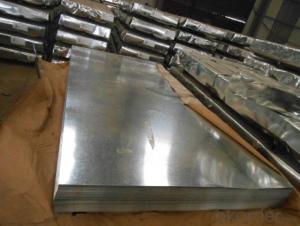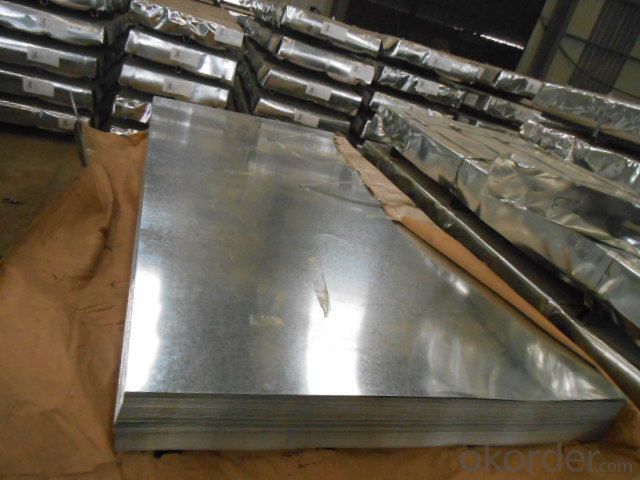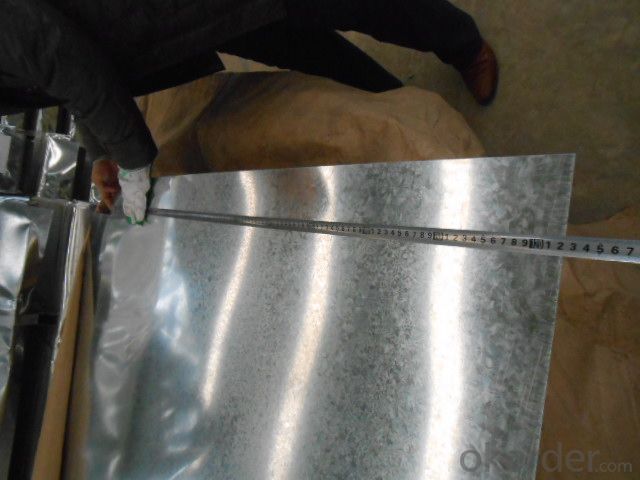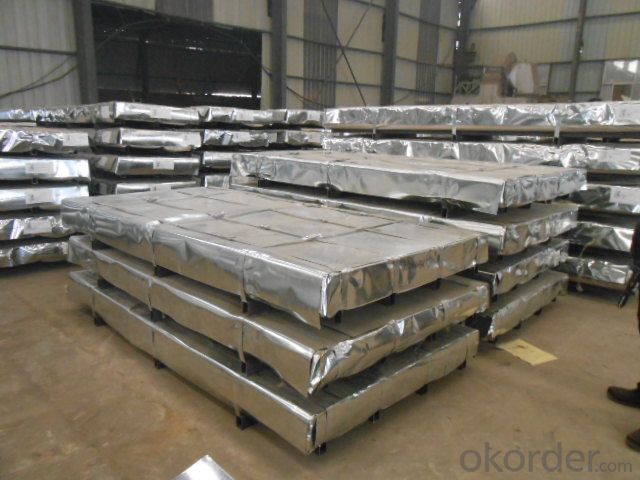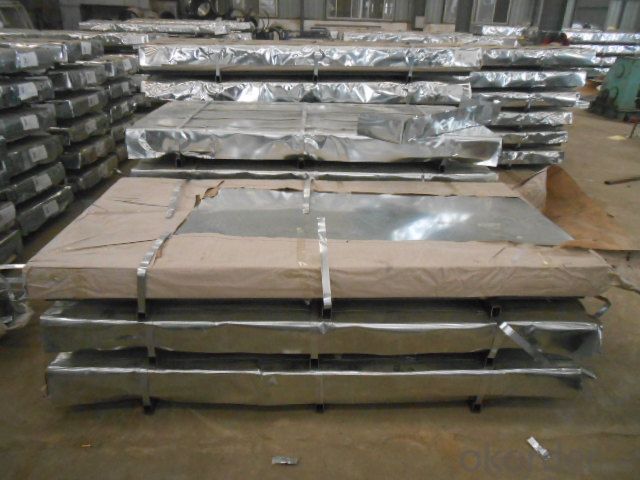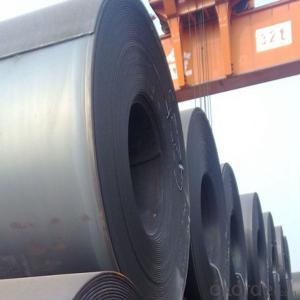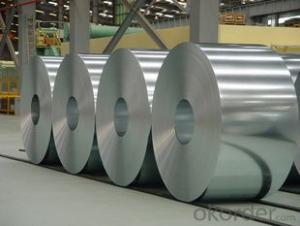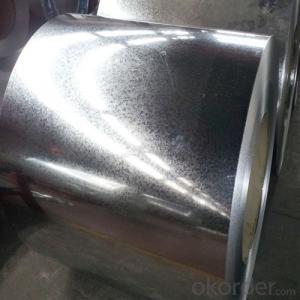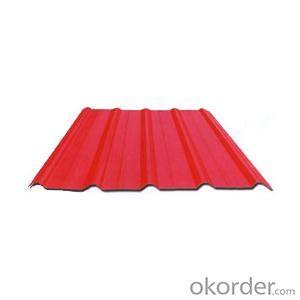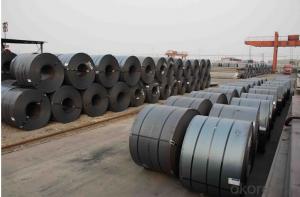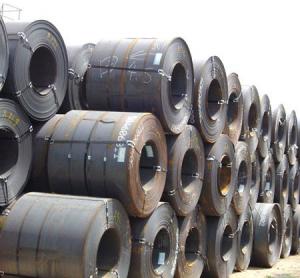GALVANIZED STEEL PLATE high quality
- Loading Port:
- China Main Port
- Payment Terms:
- TT OR LC
- Min Order Qty:
- -
- Supply Capability:
- 10000 m.t./month
OKorder Service Pledge
Quality Product, Order Online Tracking, Timely Delivery
OKorder Financial Service
Credit Rating, Credit Services, Credit Purchasing
You Might Also Like
HOT-DIP GALVANIZED STEEL PLATE
SIZE:0.2mm*1000mm*2500
ZINC COATING:60g/m2
STANDARD:JIS G 3302
SURFACE:CHROMATED,REGULAR SPANGLE, UNOILED
STEEL GRADE:SGCC
COIL WEIGHT:3-6 ton
COIL ID:508mm
TOLERANCE: THICKNESS:-0.02mm; WIDTH:0/5mm.ZINC COATING:60g/m2 TOLERANCE:+/-10% WITH QUANTITIES AND AMOUNT.
PACKAGE:FULL PACKED WITH ANTI-DAMP PAPER,IRON SHEET OUTSIDE;
PRODUCTION TIME:30DAYS AFTER RECIEVE DOWN PAYMENT OR CORRECT LC.
PAYMENT TERM:20%TT,80% AGAINST BL COPY./100% IRREVOCABLE LC AT SIGHT.
- Q: How are steel coils used in the manufacturing of tools and equipment?
- Steel coils are used in the manufacturing of tools and equipment as they provide a versatile and durable material for construction. These coils are typically shaped, cut, and molded into various components such as blades, shafts, and handles, which are then assembled to create the final product. The strength and resilience of steel make it an ideal choice for tools and equipment, ensuring longevity and optimal performance in various industries.
- Q: 2 refridgerator of similar model and same brand..one is stainless steel...the other is clear steel (cheaper)..so wat's the difference between the two?
- In okorder /... The appliances that are not made of stainless steel are made of a mild steel which is then finished with a durable enameled finish, in colors even. Stainless steel appliances look very nice in the showroom, but it is no fun trying to keep them fingerprint and handprint free. If you have ever owned a toaster that was made from stainless steel then you know how much fun it would be to have to keep a whole refrigerator fingerprint free, The oils transferred from the skin leave very distinct smears on stainless surfaces.
- Q: How are steel coils used in the production of steel hooks?
- Steel coils are used in the production of steel hooks as they provide the raw material needed for shaping, forming, and manufacturing the hooks. The coils are unwound, processed, and then transformed into the desired shape and size to create the steel hooks.
- Q: I saw an amazing flamenco player, however i have a steel string guitar, where he had a nylon stringed one. So i was wndering if its possible to play flamenco songs on the steel string guitar, and where could i find a tab for it? are there tabs for rasegueados?
- I routinely play Flamenco on a steel-string acoustic as I dislike playing my two classicals because of the neck size and tuning problems. I prefer keeping my calluses toughened sufficiently and I do that on my HD-35 Martin and sometimes on my J45/50 Gibson. So enjoy all genres of music on your steel stringed guitar.
- Q: How are steel coils used in construction?
- Steel coils are commonly used in construction for a variety of purposes, such as creating structural frameworks, reinforcing concrete, and manufacturing various building components like beams, columns, and trusses. The coils are unrolled and cut to specific dimensions, allowing them to be easily shaped and welded into various structural elements. This versatile material provides strength, durability, and flexibility, making it an essential component in constructing buildings, bridges, and other infrastructure projects.
- Q: What are the dimensions of steel coils used in automotive component manufacturing?
- The dimensions of steel coils used in automotive component manufacturing vary depending on the specific application and requirements. However, common dimensions include thicknesses ranging from 0.5mm to 3mm and widths ranging from 600mm to 2000mm.
- Q: How are steel coils inspected for defects after recoiling?
- Steel coils are inspected for defects after recoiling through a thorough visual examination and non-destructive testing techniques such as ultrasonic or magnetic particle inspections. These methods identify any surface imperfections, cracks, or abnormalities in the steel coils to ensure their quality and integrity.
- Q: LIke a steel building conversion into a residental building??? Thanks.
- Right here. Steel Homes, Steel House, Steel Buildings, Steel Home Plans, ... Steel Homes, Steel House, Steel Buildings, Steel Home Plans, Steel Houses, ... Steel Homes and Buildings · Steel Office Buildings and Construction sites ... www.karmod.eu/steel-structures - 18k - Similar pages www.karmod.eu/steel-structures steel buildings metal buildings modular homes steel building ... ... log homes photographs, log homes construction, sales agents, log homes financing, ... Easy online pricing
- Q: What are the common coil sizes available for steel coils?
- The steel coil sizes available for different industries and applications vary. However, there are standard sizes commonly used across sectors. These sizes include coil widths of 36 inches, 48 inches, 60 inches, and 72 inches. In terms of coil diameter, the most common sizes range from 20 inches to 24 inches. Furthermore, coil weights can vary greatly depending on the type of steel and its intended use, ranging from a few thousand pounds to tens of thousands of pounds. It is important to note that these sizes can differ among steel manufacturers, so it is advisable to consult the specific supplier or industry standards to determine the available coil sizes for a particular steel product.
- Q: How are steel coils inspected for yield strength?
- Yield strength inspection of steel coils involves a series of testing methods. The most commonly used method is the tensile test, where a small sample is taken from the coil and subjected to a controlled load until it reaches its yield point. In the tensile test, the sample is progressively stretched until it deforms and ultimately fractures. Throughout this process, the load and elongation data are continuously recorded. The yield strength is then determined by pinpointing the point on the stress-strain curve where the material starts showing plastic deformation or permanent elongation. Another approach to inspecting steel coils for yield strength is the hardness test. Since hardness is often linked to yield strength, a hardness test can estimate the material's yield strength. This test involves measuring the steel coil's surface resistance to indentation or penetration using instruments like a Rockwell or Brinell hardness tester. Moreover, non-destructive testing methods like ultrasonic testing and magnetic particle inspection can also be utilized to assess yield strength. Ultrasonic testing employs high-frequency sound waves to detect any internal defects or inconsistencies in the material's structure. On the other hand, magnetic particle inspection relies on the application of magnetic fields and the usage of magnetic particles to identify surface cracks or defects. In conclusion, there are various testing methods available to inspect steel coils for yield strength. These methods offer valuable information to manufacturers and inspectors regarding the steel's quality and performance capabilities, ensuring that it meets the required standards and specifications.
Send your message to us
GALVANIZED STEEL PLATE high quality
- Loading Port:
- China Main Port
- Payment Terms:
- TT OR LC
- Min Order Qty:
- -
- Supply Capability:
- 10000 m.t./month
OKorder Service Pledge
Quality Product, Order Online Tracking, Timely Delivery
OKorder Financial Service
Credit Rating, Credit Services, Credit Purchasing
Similar products
Hot products
Hot Searches
Related keywords
